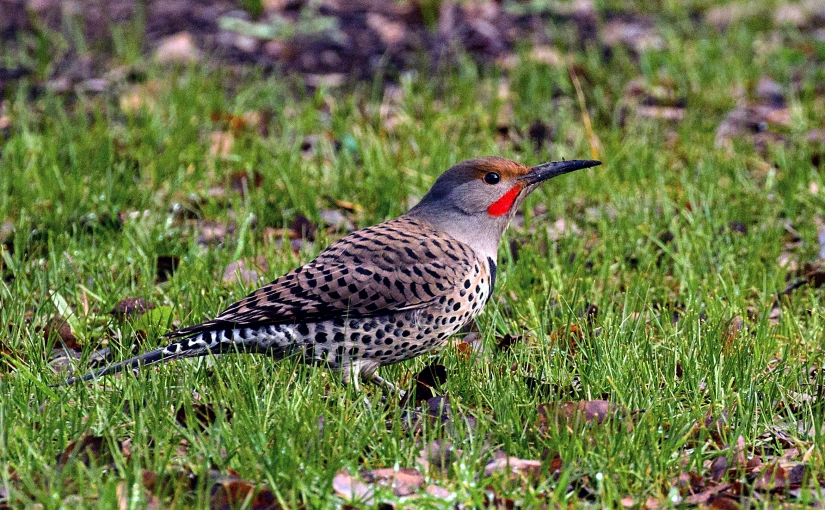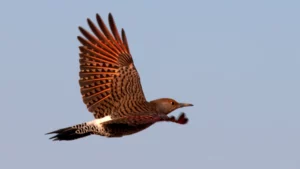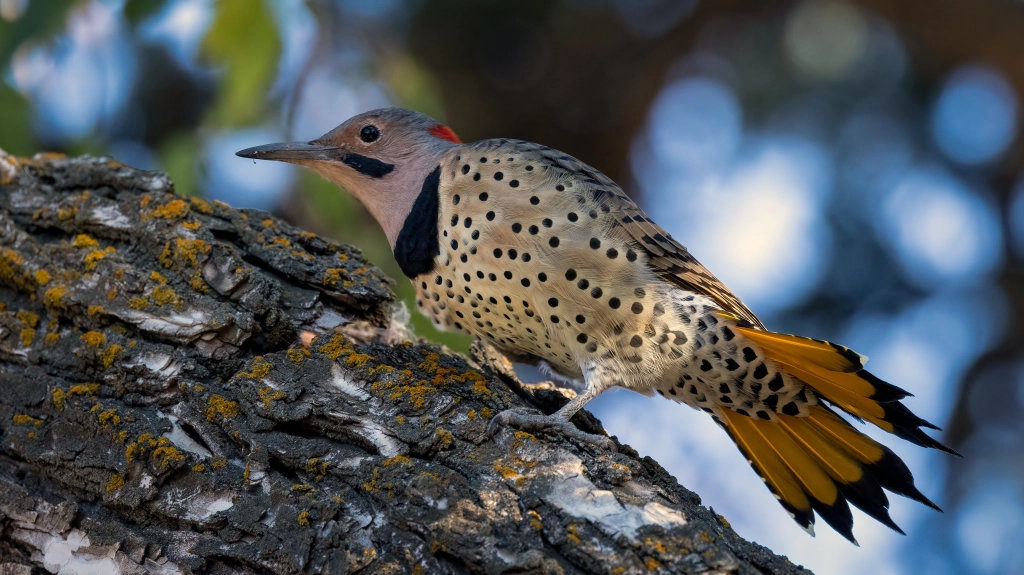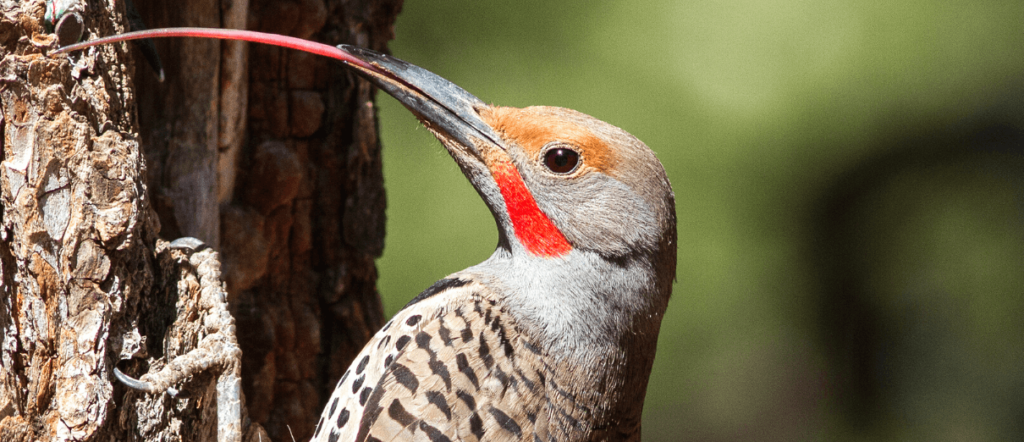We’re always excited to post another in Jim Gain’s “Learn 100 Valley Birds” series. See more of Jim’s excursions into nature at Reflections of the Natural World.
Number 8 in our series, and number 13 overall, the Northern Flicker (Colaptes auratus) is a medium-sized bird of the woodpecker family. It is native to most of North America, parts of Central America, Cuba, and the Cayman Islands, and is one of the few woodpecker species that migrate. Here in the San Joaquin Valley, the Northern Flicker is a common year-round resident.
According to the Audubon field guide, “flickers are the only woodpeckers that frequently feed on the ground,” probing with their beak, and occasionally catching insects in flight. Although they eat fruits, berries, seeds, and nuts, their primary food is insects. Ants alone can make up 45% of their diet.

Flickers also eat berries and seeds, especially in winter, including poison oak, grape, and elderberries, as well as sunflower and thistle seeds. Flickers often break into underground ant colonies to get at the nutritious larvae there, hammering at the soil the way other woodpeckers drill into wood. One flicker’s stomach was found to contain more than 5,000 ants!
As well as eating ants, flickers exhibit a behavior known as anting, in which they use the formic acid from the ants to assist in preening, as it is useful in keeping them free of parasites.
Appearance

This brownish-gray woodpecker, larger than an American Robin, has a black-barred back and is spangled below with black polka-dots. Easily recognized as it springs into flight, the flicker flashes a large white rump patch and bright red-colored wing linings and tail feather shafts.
Distribution
The Northern Flicker is the most widespread woodpecker species in North America, found from the northern treeline south through the lower 48 U.S. states into Mexico, reaching into Central America as far south as northern Nicaragua. It is also found in Cuba.

Sub-Species and Intergrades
Ten subspecies of northern flicker are recognized with 4 sub-species in the “Yellow-shafted” form and the other 6 being in the “Red-shafted” form. At one time these two primary forms were considered two separate species called the Yellow-shafted flicker (C. auratus) and the Red-shafted flicker (C. cafer). However, they commonly interbreed where their ranges overlap and are now considered one species by the American Ornithologists Union. The vast majority of Northern Flickers observed in the Valley are of the “Red-shafted” form.
Cool Fact: Tale of a Tongue
The tongues of most woodpeckers are adapted to spear and extract insects from wood, but the flicker’s tongue is a bit different — in ways advantageous for lapping up large numbers of ants.

All woodpeckers have an elongated tongue attached to an arrangement of bones, cartilage, and muscles known as the hyoid apparatus, which wraps around the bird’s skull, ending near the rear of its eye sockets. The Northern Flicker has an extra-long tongue that can extend up to two inches past the tip of its beak. It’s the perfect tool for probing into anthills. This lengthy tongue is supported by an elongated hyoid bone, which extends into the bird’s upper mandible.


Excellent information and incredible pictures.
Thank you!